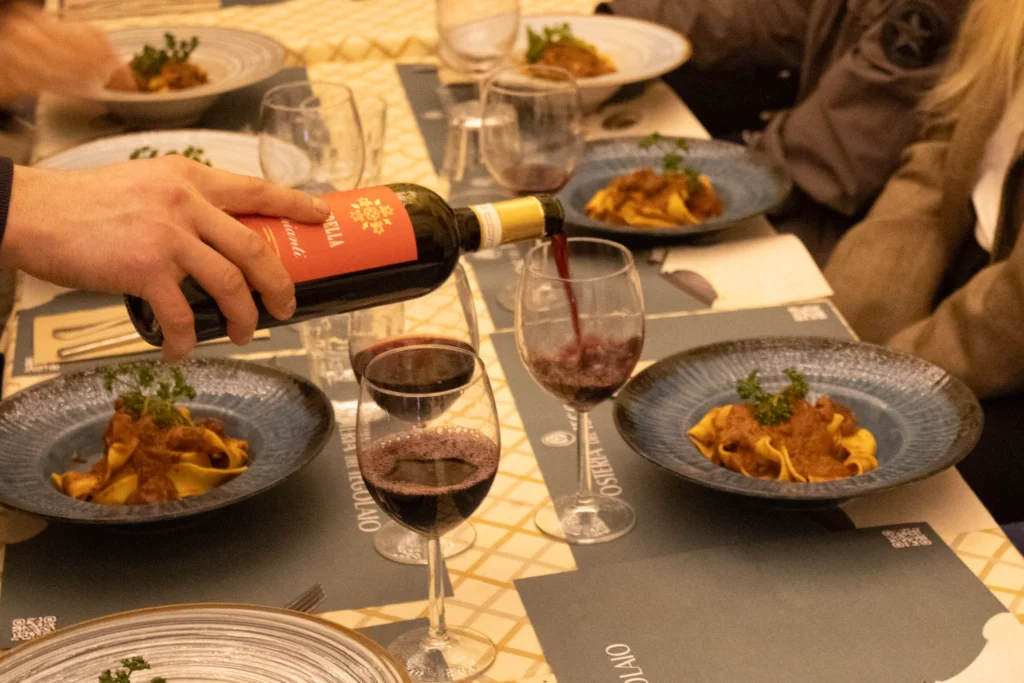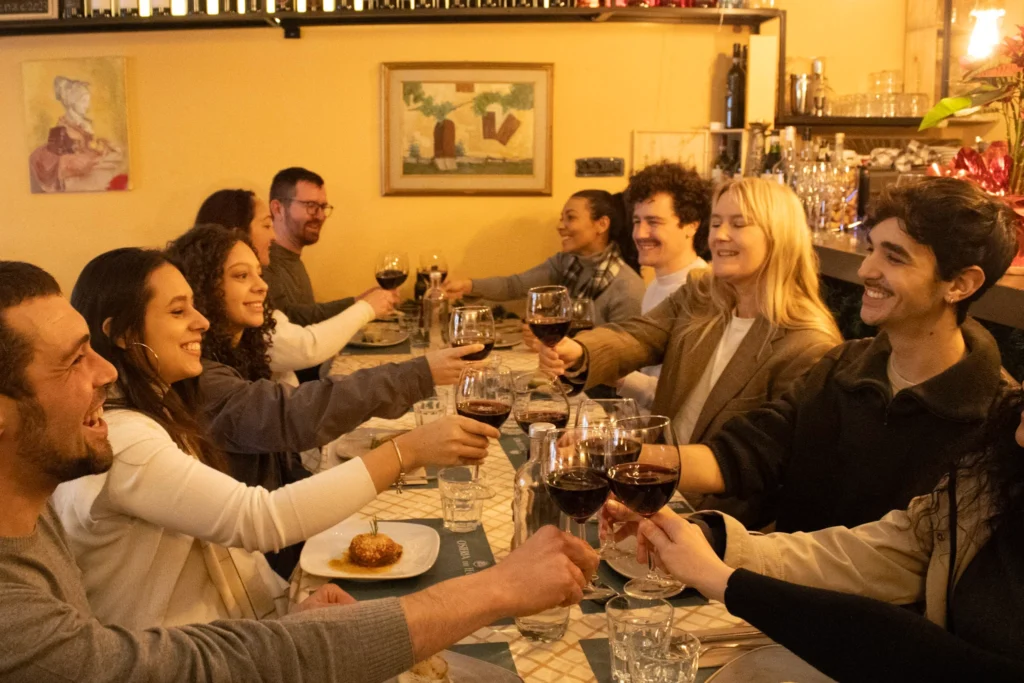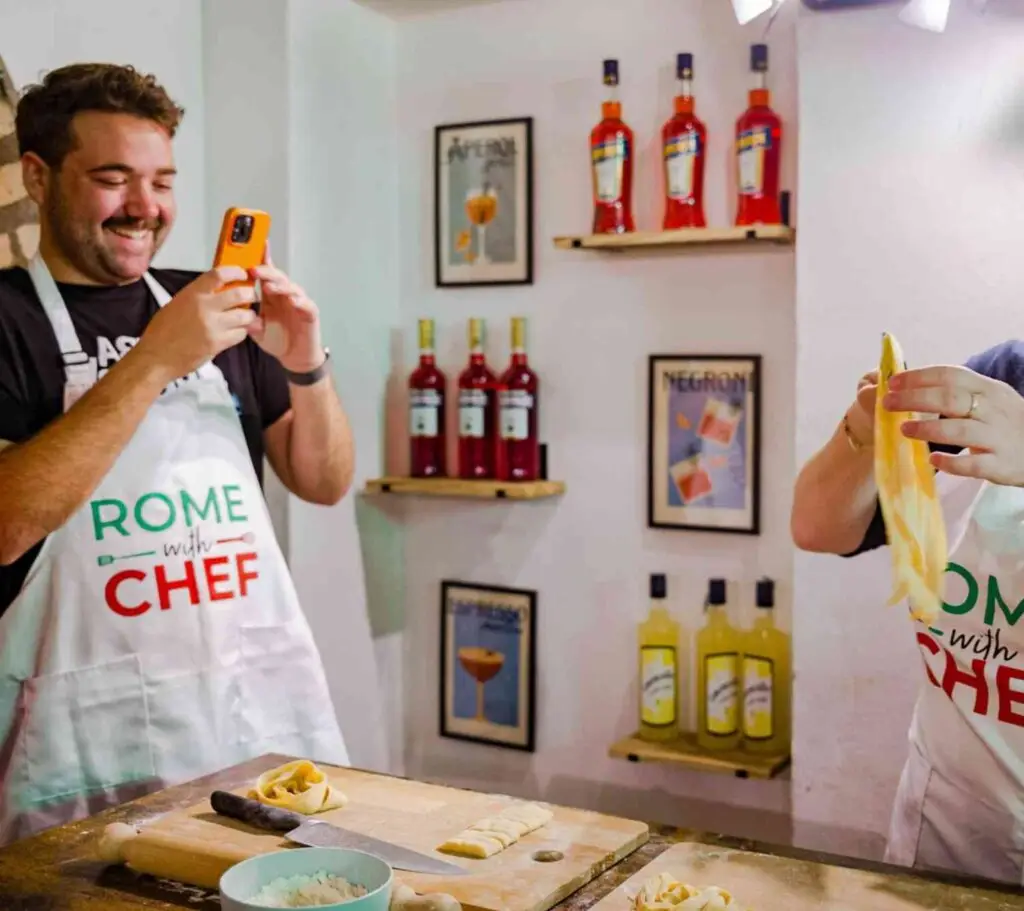It’s easy to lose yourself in Italy’s history, culture and cuisine. But a sometimes underrated aspect of visiting the Bel Paese is the amazing variety of Italian drinks.
Some of the world’s finest drinks and beverages are made in Italy. There is a large range of delectable drinks available: from pre-dinner drinks to cocktails for an evening Tinder date. Many Italian drinks have come to earn international recognition. If you want to drink like a true Italian, we’ve compiled a list of drinks that you should taste at least once while in Italy.
Limoncello
The Italian liqueur of limoncello is created with lemon zest that has been let to rest in a base of alcohol. The mixture is then blended with sugar and water before being filtered. Although limoncello is consumed and made all across Italy, it is most frequently linked with the South of Italy and the Amalfi Coast—especially the island of Capri where it was invented and patented in 1988.
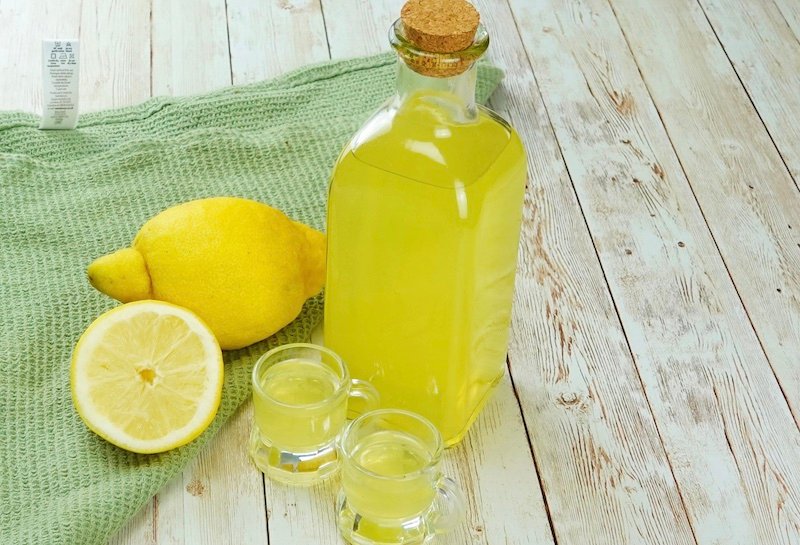
As well as having a distinct citrus flavour with fresh, sweet, and fragrant undertones, limoncello is distinguished by its vivid yellow hue. It is typically consumed as a digestif, always served chilled and sometimes diluted in glasses of ice-cold water. It is a common element in cocktails and other lengthy drinks, but it may also be readily used in a variety of desserts.
→ Indulge in limoncello on our Spritz and Spaghetti Class!
Campari
Campari is a popular drink in Italy and all over the world today. It first appeared in a small neighbourhood pub in the 1800s in the Novara region of Italy. Gaspare Campari created the bitter recipe for the alcoholic beverage that later swept across Italy and Europe, which is made up of a combination of herbs, spices, fruits, and alcohol.
At first, the only place you could try this drink was at Gaspare’s bar in Milan. But when his sons took over the firm, this Italian drink was transported to Nice and the stunning French Riviera. It didn’t take long for Campari to become popular all across the world, and for the Campari Group to become Italy’s leading beverage company.
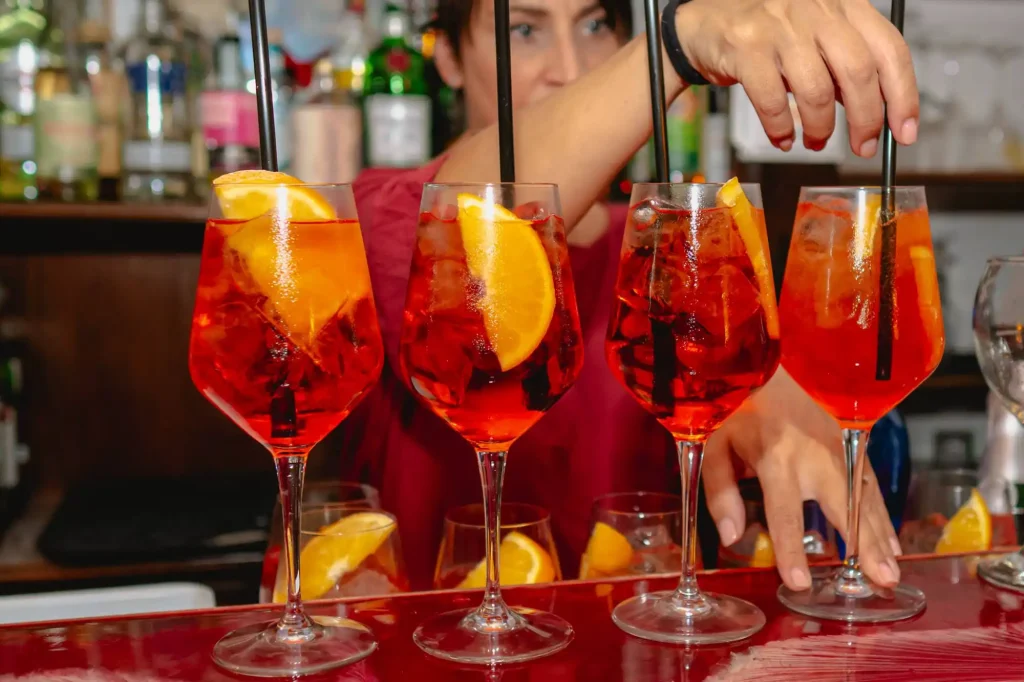
It may take some time for some people to get used to the bitter flavour of Campari because it is so uncommon. It serves as a wonderful cooling boost for digestion and is frequently served with soda or citrus juice as well.
Aperol Spritz
Originally called the Veneziano, this world-famous Italian drink was a byproduct of the Austrian occupation of Venice in the 1800s.
Austrian diplomats and employees of the Hapsburg Empire enjoyed the Venetian habit of drinking a glass of wine after a long day at work. But because they weren’t used to such strong wines — and didn’t want to risk being pushed into the canals, drunk, by the Venetians whose city they were occupying — they asked for a ‘spray’ (spritz) of water to dilute the wine.
Bitter herbs were gradually added to the beverage throughout time to give it additional pizazz.

The Barbieri Brothers created their own spritz in the 1920s by combining oranges, rhubarb, and gentian, which produced the bright-orange Aperol Spritz that is now well-known worldwide. They would dilute Venetian wine with sparkling water to make it gentler because it was too strong for them to drink.
Aperol Spritz is a popular pre-dinner drink, and one of the main stars of our Spritz & Spaghetti cooking class, a unique dinnertime experience which combines a hands-on pasta-making class with a cocktail demo and drinks-tasting session.
→ Learn how to make the perfect Aperol Spritz
Negroni
Named after Count Camillo Negroni, an avid traveller who lived in Florence in the 1920s, the origins of this drink are rooted in legend. It’s widely believed that Camillo Negroni, inspired by a recent trip to London, returned to his local tavern and requested that his regular drink be served somewhat differently.
He ordered that gin be added to his drink and that it be topped with a burned orange peel rather than the standard lemon. And thus, Negroni was born.
Now one of Italy’s most successful alcoholic exports, Negroni is a perfect balance of gin, Campari, and red Vermouth, topped off with a citrusy twist. If gin is not your thing, there’s a twist on this recipe, the Negroni Sbagliato (‘Wrong Negroni’), which substitutes gin for sparkling wine.
The Negroni clan established a distillery that continues to produce a conveniently blended concoction known as the Antico Negroni.
Prosecco
Prosecco is a classic white wine in Italy. It is mostly created using the Charmat method and has two forms of effervescence: still prosecco and sparkling prosecco.
The name “prosecco” refers to a DOC (quality-controlled Denominazione di Origine Controllata) alcoholic drink produced in the region around Veneto and Friuli Venezia Giulia. Among them, some proseccos are exceptionally well-known and have earned the DOCG quality designation (DOC Garantita); the most well-known is undoubtedly Prosecco di Conegliano-Valdobbiadene.
Prosecco is manufactured from white grapes from the same vine (Prosecco), now better defined as Glera; this distinction was introduced in 2009 to avoid confusion between the grape variety and the wine, while also better preserving the DOCG brand of Prosecco di Conegliano-Valdobbiadene.
Glera grapes must account for at least 85% of the total grapes, with the remaining 15% made up of chardonnay, pinot grigio, verdiso, bianchetta trevigiana, and other carefully regulated grapes.
The Prosecco grape is indigenous to Veneto and Friuli Venezia Giulia; it thrives in Treviso, Belluno, Venice, Padua, and Vicenza.
Bombardino
Translated in English as ‘the mini bombardment’, Bombardino is the ultimate Italian winter drink.
Made up of three parts of Zabaione or Vov (Advocaat can also be tasty), one part of brandy or rum, whipped cream, and a small amount of cocoa powder, it’s sweet, warm, and rich enough to blow your taste buds away.
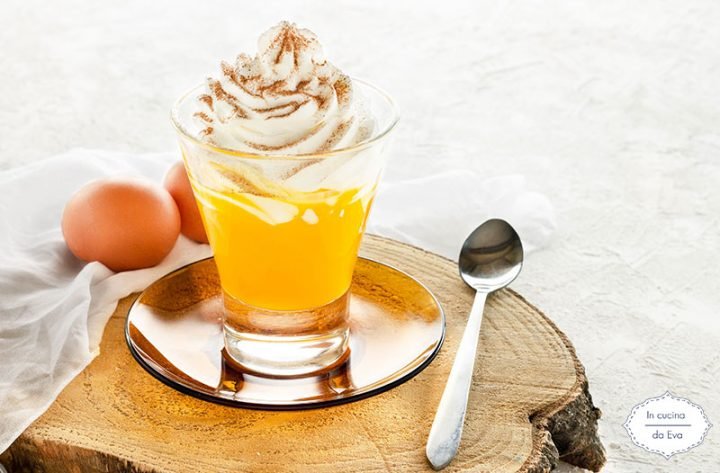
Bombardino is the closest thing Italians have to eggnog. And if you’re up in the mountains during winter, it’s a nightly staple!
Cappuccino
We can’t talk about Italian drinks without mentioning the country’s coffee scene. Italians have elevated the art of coffee to amazing heights, establishing a coffee culture which is both incredibly simple and fiendishly complicated—especially to outsiders who are often at a loss about what to order, where (and how much) to pay, and at what time of day.
Named after the hood of the monks who are credited with its invention, cappuccino is a favourite morning beverage for Italians, especially when they have breakfast at a café. This classic Italian beverage is made from coffee, milk foam, and a splash of milk.
It’s challenging to produce an authentic cappuccino at home unless you have a specialised coffee maker. Italians thus produce the best substitute, caffé latte, which is simply coffee and warm milk.
Just be careful when ordering a latte coffee. The Italian word for latte is milk, and what we can “latte” is the shortened form of latte macchiato (pronounced “mah-kee-AH-toe”) which is a coffee with a generous topping of milk.
Amaretto
Amaretto is a sweet Italian liquor that originated in Saronno, near Milan. This drink is named after the Italian word for bitter (amaro), but it is just mildly bitter.
The Disaronno brand (which literally means ‘from Saranno’) popularised amaretto internationally in the 1960s, but it is actually much older. Disaronno and the Lazaronni families both claim to be the inventors of amaretto. In the nineteenth century, they manufactured amaretto cookies and decided to develop a matching drink to these biscuits.
However, a more romantic version of the story dates the origins of amaretto to around 1525. According to this version, one of Leonardo da Vinci’s disciples, Bernardino Luini, was commissioned to paint the sanctuary of a church in Saronno, but was struggling to find a model for his Madonna (that’s mother of Christ, not the pop star). Luini soon found inspiration for his in a beautiful widowed innkeeper, and as a token of appreciation for painting, the widow gifted him a bottle of brandy infused with apricot kernels.
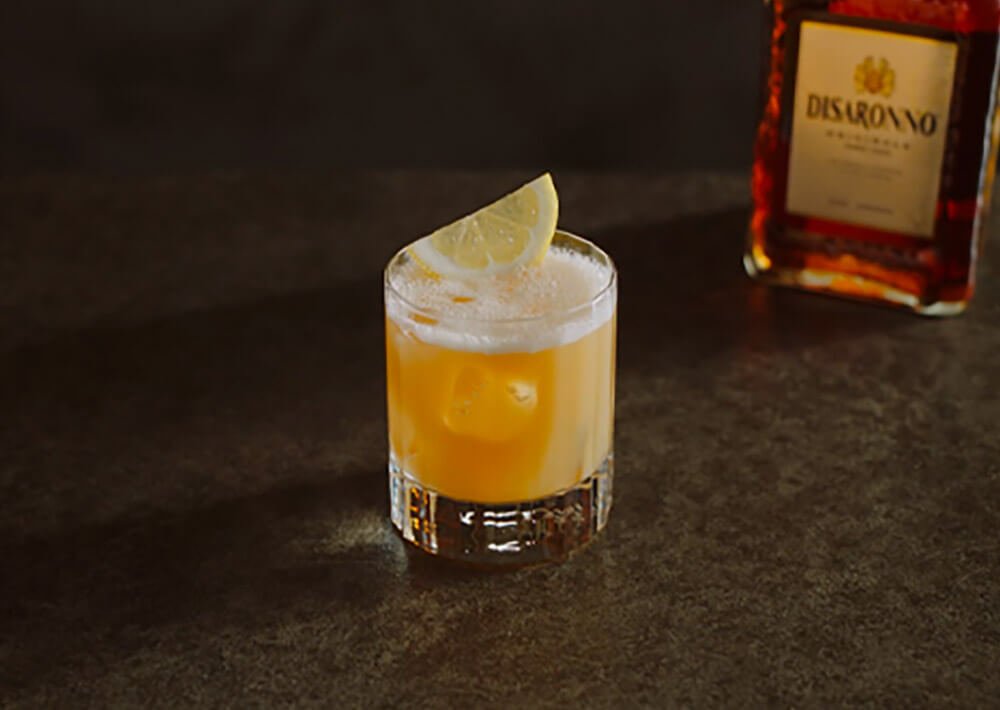
It’s commonly referred to as an almond-infused liqueur, but many of the recipes utilise apricot kernels or a combination of the two; for example, Disaronno comprises just apricots. It is sometimes made with peach pips.
It’s also a very flexible drink. In the West, it is usually mixed with Coke soda, giving it a Cherry Cola-Esque flavour, and in Italy, it is mixed with coffee and several sweets such as Tiramisu. It also goes well with whiskey and vodka in creamy cocktails. Amaretto is also used in savoury recipes to prepare sauces for pasta, vegetables, chicken and fish.
Join us for a real taste of Rome
These are just a few examples of the many delightful drinks that Italy has to offer. Exploring Rome through your tastebuds is the most rewarding way of experiencing the Italian capital, which is why we have perfected a number of cooking classes and food tours to suit every palate! Feel free to share your preferred Italian beverages in the comment section below!
Looking for a unique experience that blends real Italian drinks with all the fun of a night out? Check out the Tipsy Tour!


